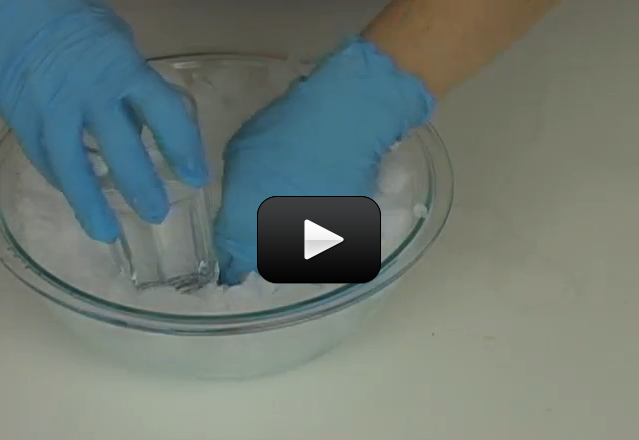Did you know that supercooled liquids need to heat up in order to freeze into a solid? It’s totally backwards, I know…but it’s true! Here’s the deal:
A supercooled liquid is a liquid that you slowly and carefully bring down the temperature below the normal freezing point and still have it be a liquid. We did this in our Instant Ice experiment.
Since the temperature is now below the freezing point, if you disturb the solution, it will need to heat up in order to go back up to the freezing point in order to turn into a solid.
When this happens, the solution gives off heat as it freezes. So instead of cold ice, you have hot ice. Weird, isn’t it?
Sodium acetate is a colorless salt used making rubber, dying clothing, and neutralizing sulfuric acid (the acid found in car batteries) spills. It’s also commonly available in heating packs, since the liquid-solid process is completely reversible – you can melt the solid back into a liquid and do this experiment over and over again!
The crystals melt at 136oF (58oC), so you can pop this in a saucepan of boiling water (wrap it in a towel first so you don’t melt the bag) for about 10 minutes to liquify the crystals.
Please login or register to read the rest of this content.


The Instant Ice experiment is here: https://www.sciencelearningspace2.com/2011/06/instant-ice/ There’s a link to it in the description and also it’s the experiment just before this one.
Where’s the video you were talking about in this video? The crystal structure one, where it froze instantly.
Keep in mind that you need two packets of sodium acetate in order to make the sculpture. You start by taking a small amount of the crystals from an activated packet and putting them crystals into a disposable container. Then pour a small stream from a different packet (that is still liquid) to make the sculpture.
when i did it when i cut open the second pack i froze right away so it was just slush ;-;
thanks!